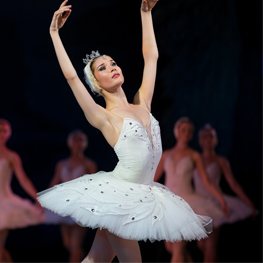
If I have observed one thing after a decade of having a school-age child, it’s that the arts motivate kids to perform better in school. Sure, my daughter comes from an artsy family already. Her mom is a writer, and her dad is a theatre director, but she’s not an extension of us; she is uniquely herself, and her exposure to a wide variety of arts helps her discover her own passions, proclivities and personhood.
The more types of arts my daughter engages in, the happier and more motivated of a student she becomes overall, even in her most challenging academic classes. But don’t take my word for it. Check out the messages broadcasted prolifically by Sir Ken Robinson, author of the book, Finding Your Element, How To Discover Your Talents and Passions and Transform Your Life. One of the most popular TED speakers and a creativity and education expert, Robinson asserts that the job of education is to teach children to become creative thinkers rather than merely good workers.
In addition to Robinson’s theory that a child’s exposure to a steady stream of their talents and passions leads to finding future work right in their element, we must remember something else. The greatest challenges faced by civilization are going to be solved by our children one day. Do we want them to behave like well-behaved workers, or do we want them to become the creative thinkers, problem-solvers and innovators they were born to be?
Participation in the arts is just as important to raising well-rounded children as participation in academics and athletics. The arts awaken personal power in children by helping them discover their talents and passions organically. I know this is true because my daughter loves to sing, dance, act and draw already. Recently, she’s also started reading Shakespeare, watching historical documentaries, playing the piano and taking hip-hop classes.
I am not bragging. But I am keenly aware that I may have been inadvertently putting imagined limits on just how creative my daughter could become. Now, thanks to her example, I am beginning to think there isn’t anything she can’t do. And isn’t that exactly what I want her to believe?
Why do parents put limits on kids’creative impulses when creative activities clearly benefit real-world performance? My daughter has got the rest of her life to discover and pursue creative activities that light her up from the inside and inspire her to be the best she can be. My job as her mother between now and the day she ventures out into the world on her own is to make sure she never runs out of opportunities to practice being her multi-faceted self. She can sift and sort through what she likes best and doesn’t prefer for herself. She doesn’t need me for that - except to remind her that how she spends her time and energy in life is her choice.
When I leave this world some day - as of course, I will, we all will - I want to depart knowing I exposed my daughter to as much personal enjoyment of life as I could. And the arts will have played a leading role in this endeavor. I don’t want my daughter’s focus in life to be on survival or drudgery; I want her life to be a celebration of the art of being herself. And, in order to do this, she has to explore and assess her talents and abilities in her own ways.
If you are denying your kids access to the arts because you think creativity is less important or less valuable than academics and athletics, I hope you are planning to stick around for a few more decades to witness for yourself the important role creativity will play in the evolution of our future.
If you are, as I was, inadvertently capping the amount of creative activities your kids participate in to levels deemed reasonable, I hope you will stop. Instead of cutting the arts out of our kids’schedules, we need to allow access to as much arts activity as a child’s schedule permits. They can set the bar to a level that feels right from there.
Here are 25 types of activities to expose your kids to both in school and outside of school. Please don’t be confused about whose job it is to expose our kids to the arts. Arts engagement is a parent’s job first, before teachers or instructors get involved. Engage your children in the arts and watch the magic happen. They will thank you for your encouragement today and in the future with their smiles and feelings of contentment.
In school:
1. Fine arts (drawing, painting, sculpture and printmaking)
2. Photography, video and multi-media arts
3. Choir and vocal performing
4. Band and orchestra
5. Theatre arts
6. Film (fictional and documentary)
7. Yearbook
8. Dance
9. Creative writing
10. Leadership
11. Robotics
Outside of school:
12. Animation
13. Architecture and design
14. Opera
15. Ballet
16. Crafts
17. Cooking
18. Decorative arts
19. Fashion
20. Woodcrafts
21. Graphic arts
22. Jewelry
23. Junk, trash and found art
24. Gardening
25. Performance art
Journalist, author and writing coach Christina is not afraid to get schooled by her teenage daughter. In fact, it might be something that happens more often than she would like to admit.
Calgary’s Child Magazine © 2025 Calgary’s Child